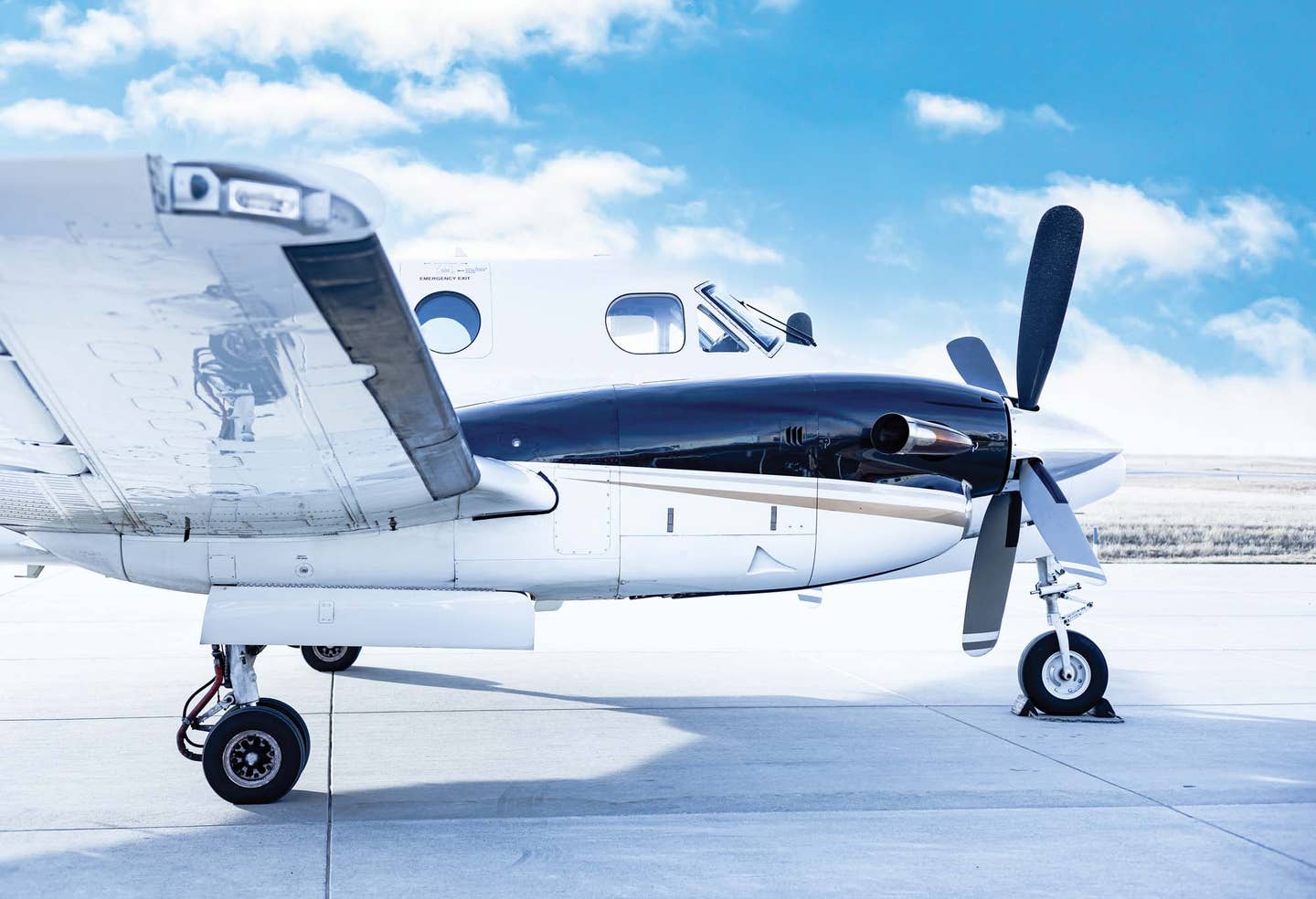May-June 2005 On The Radar
Final numbers for general aviation’s 2004 financial year have been released by the General Aviation Manufacturers Association (GAMA), and the news is great. Piston singles sales hit a 20-year high. âBonus depreciation, coupled with the continuing growth of the U.S. economy helped make 2004 a turning point for our industry,â says GAMA chairman Jim Schuster.
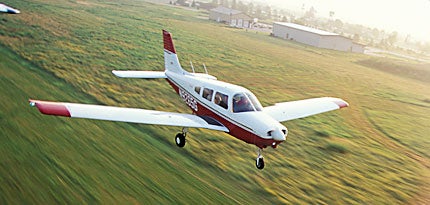 They're Back!
They're Back!
Final numbers for general aviation's 2004 financial year have been released by the General Aviation Manufacturers Association (GAMA), and the news is great. Piston singles sales hit a 20-year high. "Bonus depreciation, coupled with the continuing growth of the U.S. economy helped make 2004 a turning point for our industry," says GAMA chairman Jim Schuster.
Moreover, industry billings totaled $11.9 billion, the third highest ever. That figure is up more than 19% over 2003, as all categories showed good growth. Business jets increased from 518 units to 591, while turboprops went from 272 sales in 2003 up to 321 last year. Single-engine sales jumped from 1,896 to 2,051 in 2004, a hefty, healthy 8.2% increase.
And the good news doesn't stop there. Last year's preliminary data from the National Transportation Safety Board (NTSB) shows the fewest GA accidents since 1938, the year record-keeping began. Fatal accidents were the lowest on record since 1945, down 11.4%.
That trend may get a run for its money, however, due to the new definitions from the NTSB as to what an accident really is. A Notice for Proposed Rulemaking (NPRM) would now require pilots to report "structural failure of a propeller" and "loss of information from a majority of an aircraft's electronic primary displays" as substantial damage, required an immediate notification of the NTSB. In the NPRM, the agency argues that propeller failure and electronic display failure (as well as several other new conditions) could not only compromise safety, but that timely reporting would facilitate timely corrective actions concerning the entire GA fleet. For more information, contact GAMA at (202) 393-1500 or log on to www.gama.aero. Cessna just announced that its Skyhawks have received FAA certification to carry the Garmin G1000 all-glass panel. The first C-172 rolled out of production in 1955, and since then, nearly 40,000 of them have been sold.
 |
| 2005 Cessna 172 |
 |
| 2005 Cessna 172 with the Garmin G1000 |
 |
| Avidyne CMax Airport Diagram |
 |
| Avidyne CMax Approach Plate |
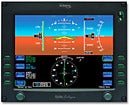 |
| Avidyne Flight Director |
High-Tech Keeps On Coming
"The G1000 has become the most requested avionics package for the C-172, C-182 and C-206," says Cessna chairman, president and CEO Jack Pelton. "We believe that this is due to the enhanced safety and situational awareness it provides." First shipments of the new Skyhawk are already under way. For more information, call Cessna Aircraft Company at (800) 4-CESSNA or log on to www.cessna.com.
Avidyne, Garmin's chief competitor for the light GA glass-panel market, announced several significant improvements to its FlightMax Entegra Integrated Flight Deck. The company is an original equipment manufacturer for New Piper (www.newpiper.com), Adam (www.adamaircraft.com), Lancair (www.lancair.com), Eclipse (www.eclipseaviation.com) and Cirrus (www.cirrusdesign.com).
This past December, Avidyne (www.avidyne.com) certified a software package called CMax that allows Cirrus owners to upload and view Jeppesen electronic approach plates in the cockpit. Unlike the paper versions of the same charts, pilots can now see their aircraft's GPS-located position on the maps. While Avidyne hopes that CMax will be a giant step toward a paperless cockpit, the FAA is not yet completely behind the idea. The feds still are requiring both Cirrus and Avidyne to print statements in user manuals stating that the electronic images can't be used by pilots as a primary source of information. Translation: Keep your Jepps onboard.
Additionally, CMax is intended to make ground operations safer and easier. At startup and on arrivals, when the aircraft slows below 40 knots, the software magically pulls up the local airport diagram. In theory, the feature should cut back on the number of "progressive taxi" requests as well as runway incursions. Currently only Cirrus owners have access to the CMax, but Avidyne promises that the upgrades will be available to its other clients soon.
Also from Avidyne is the much-awaited flight director (FD) for the FlightMax Entegra. Cirrus pilots with the optional FD and STEC 55 autopilot now can have command bars. The FD "flying wedge" graphic on the primary flight display works while coupled with the autopilot or alone for hand-flying. The new FD is available on both SR20 and SR22 models that are shipping immediately. Information regarding retrofits for legacy aircraft will be announced at a later date. For more info, contact Avidyne at (800) 284-3963 or log on to www.avidyne.com.
 |
| Cirrus SR22-GTS |
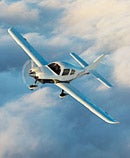 |
| Lancair Columbia 350 |
 |
| Pilots Quentin Smith and Steve Brooks |
 |
| Epic LT |
 |
| Comp Air Jet |
And one indication that Cirrus founders Dale and Alan Klapmeier may be right on their assertion that Cirrus represents a fundamental shift in personal transportation comes from, of all places, Bismarck, N.D. The city is working with a $1.5 million grant to develop a regional air service to communities that are overlooked by commercial airlines. The plan, which is expected to begin trial runs before the year's end, would allow passengers to pick their destinations, then fly there in a variety of aircraft, including a fleet of five Cirrus planes. For more info, call Cirrus Design at (218) 727-2737 or log on to www.cirrusdesign.com.
Lancair continues ramping up production of its composite Columbia 350 and 400-series airplanes. The company is adding 130 new workers to its current staff of 400 to tackle the growing backlog of orders. Expansion of the physical factory is on the board as well. The Bend, Ore., manufacturer expects to deliver almost 200 aircraft this year and more in 2006.
With the certification of the Columbia 400 all the way to FL250 behind them now, Lancair is hard at work on a new aircraft. Skunk Works' secrecy has the project under wraps. Of course, some expect the company to announce retractable gear while others suggest a whole new design, possibly a six-seat, single-engine turbine. Lancair isn't telling anyone until fall of this year. Contact Lancair Aircraft Company at (541) 318-1144 or log on to www.lancair.com.
But two British pilots, Quentin Smith and Steve Brooks, are happy to tell everyone about what they're flying and where. On January 17 of this year, the two landed their Robinson R44 Raven II helicopter at the South Pole. It seemed like the only thing to do, as the two had landed at the North Pole two and a half years earlier.
Smith and Brooks flew to within five miles of the pole, but had to set the helicopter down to wait out the weather. They built a small igloo around the Robinson's engine compartment and heated it with an avgas cooking stove. When the weather finally cleared, the Raven's engine started immediately, and the pair completed their record-setting flight. Call Robinson Helicopter Company at (310) 539-0508 or log on to www.robinsonheli.com
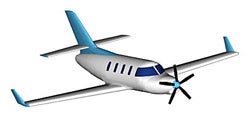 Shortcuts To Dream Machines
Shortcuts To Dream Machines
Aircraft Investor Resources will offer the Epic LT, a new six-seat, single-engine turbine for sale in the experimental category, leapfrogging the time and expense of certification. There's nothing experimental about the powerplant, however. The 350-knot cruise is provided courtesy of a Pratt & Whitney PT6. Front-seaters enjoy state-of-the-art avionics, including synthetic vision, while back-seaters roam the cabin-class interior, complete with custom cabinetry and multimedia options. Aircraft Investors Resources, also announced plans to make a twin-engine pure jet. For more information, contact Aircraft Investors Resources at (702) 682-2389 or log on to www.epicaircraft.com.
Another shortcut to your dream machine may just come from Aerocomp, in Merrit Island, Fla. The kit maker is under way to develop the Comp Air 12 turbine, an up-to-12-passenger single with a Lycoming turboprop out front. The Comp Air 12 is expected to deliver about 275 knots with a range of about 2,800 miles. And yes, this is a kitplane.
If that one doesn't get you, how about the new Comp Air Jet? The Lycoming-powered, single-engine, all-composite jet already is in flight testing, and a painted, upholstered version will doubtlessly be on the air-show circuit this year. Of course, the Comp Air Jet comes in more colors and interior options than any other jet on the market. Why? Because you build this airplane yourself, too. For more info, contact Aerocomp Inc. at (321) 453-6641 or log on to http://aerocompinc.com.
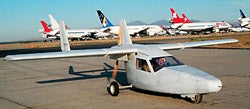 As long as you're building, you might as well pay attention to a new kit in development in California (naturally). The Volante Flying Car already is coming and going from the runways at Mojave, Calif., flight testing to become the perfect blend of both automobile and airplane. Powered by a 150 hp Lycoming 0-320, the it's-a-car/it's-a-plane cruises at 150 mph in the air and normal highway speeds on the ground, towing the wings behind it. No word yet whether or not it will have LoJack. For more info, call Volante Aircraft Company at (714) 545-0125 or log on to www.volanteaircraft.com.
As long as you're building, you might as well pay attention to a new kit in development in California (naturally). The Volante Flying Car already is coming and going from the runways at Mojave, Calif., flight testing to become the perfect blend of both automobile and airplane. Powered by a 150 hp Lycoming 0-320, the it's-a-car/it's-a-plane cruises at 150 mph in the air and normal highway speeds on the ground, towing the wings behind it. No word yet whether or not it will have LoJack. For more info, call Volante Aircraft Company at (714) 545-0125 or log on to www.volanteaircraft.com.

Subscribe to Our Newsletter
Get the latest Plane & Pilot Magazine stories delivered directly to your inbox






